As the United States did not give the USSR to join NATO
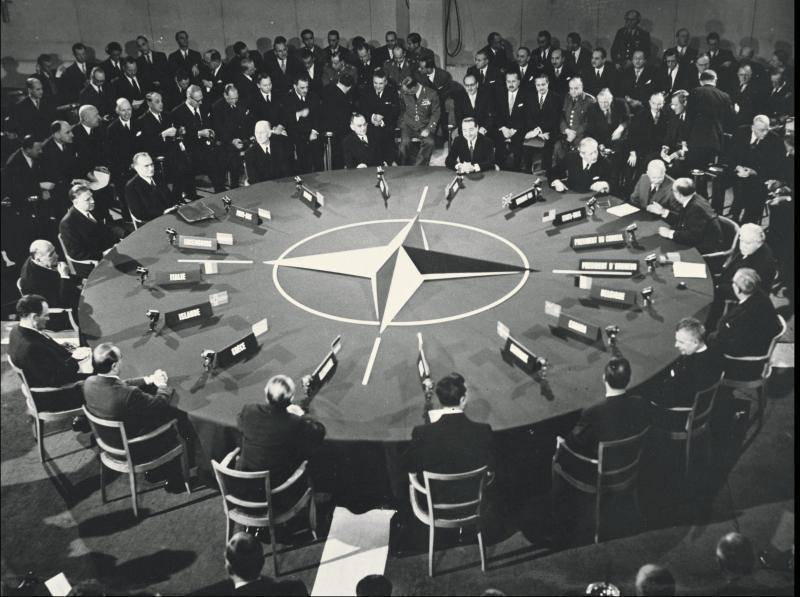
Subsequently, Anders Fogh Rasmussen argued that NATO was created to counter Soviet aggression in Europe. The post-war period was indeed the epoch of real expansion of the Soviet Union and the socialist model in post-Hitler Europe. At the same time, a whole series of countries of Eastern and Central Europe have completely fallen into the orbit of Soviet influence - Poland, Hungary, Czechoslovakia, Romania, Bulgaria, Yugoslavia, and Albania. The second half of 1940's was the civil war in Greece, where the coming to power of the strong communist movement was also quite real. Under these conditions, the West, who was mortally afraid of the Soviet threat, began to form a NATO bloc.
Initially, NATO included 12 countries - the United States, Great Britain, France, Canada, Iceland, Denmark, Norway, Belgium, the Netherlands, Luxembourg, Italy and Portugal. The thirteenth in this list could be ... the Soviet Union. At least, this possibility was discussed by high-ranking representatives of the Soviet leadership.
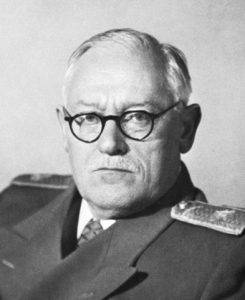 Back in 1949, Soviet Foreign Minister Andrei Yanuarevich Vyshinsky in one of his notes expressed interest in the proposal of the head of the British diplomatic department Ernst Bevin about the establishment of the Western Union Defense Organization (the immediate predecessor of NATO). It was proposed to discuss the possibility of cooperation with this structure of the Soviet Union, and even the participation of the USSR in it. Actually, there was nothing surprising here - even four years before the creation of NATO, the Soviet Union and the Western powers were allies and fought together on the fronts of the Second World War against Hitler Germany and then Japan.
Back in 1949, Soviet Foreign Minister Andrei Yanuarevich Vyshinsky in one of his notes expressed interest in the proposal of the head of the British diplomatic department Ernst Bevin about the establishment of the Western Union Defense Organization (the immediate predecessor of NATO). It was proposed to discuss the possibility of cooperation with this structure of the Soviet Union, and even the participation of the USSR in it. Actually, there was nothing surprising here - even four years before the creation of NATO, the Soviet Union and the Western powers were allies and fought together on the fronts of the Second World War against Hitler Germany and then Japan. 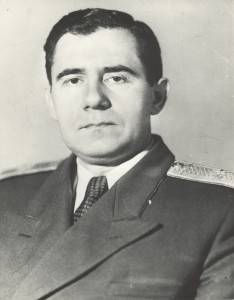 The first time after the end of World War II, both the Western powers and the Soviet Union were afraid of a revival of aggressive moods in Germany. It was for this purpose that Germany remained under the control of the occupying forces, was divided into occupation zones, there was no question of the revival of the German armed forces. In this context, the joint participation of the Soviet Union and Western countries in the military-political bloc, directed against the revival of fascism, would be quite logical. This, by the way, was recognized in 1951 by the then First Deputy Foreign Minister of the USSR Andrei Andreevich Gromyko. However, it soon became clear that the true purpose of creating a NATO bloc was to oppose the Soviet Union, not the revival of Nazism and fascism.
The first time after the end of World War II, both the Western powers and the Soviet Union were afraid of a revival of aggressive moods in Germany. It was for this purpose that Germany remained under the control of the occupying forces, was divided into occupation zones, there was no question of the revival of the German armed forces. In this context, the joint participation of the Soviet Union and Western countries in the military-political bloc, directed against the revival of fascism, would be quite logical. This, by the way, was recognized in 1951 by the then First Deputy Foreign Minister of the USSR Andrei Andreevich Gromyko. However, it soon became clear that the true purpose of creating a NATO bloc was to oppose the Soviet Union, not the revival of Nazism and fascism. The fact that the Soviet Union had no aggressive intentions towards NATO member countries is evidenced by the fact that the response step - the creation of the Warsaw Pact Organization - was undertaken by the socialist countries only in 1955, six years after the creation of NATO. Until that time, the USSR was counting on the normalization of relations and even considered the likelihood of its entry into the North Atlantic Alliance. But the West did not even want to hear that the USSR would become a member of NATO, since the very fact of this deprived the North Atlantic Alliance of any meaning.
In 1952, the first NATO expansion took place - two strategically very important countries — Turkey and Greece — were taken into the bloc (in the latter, by this time, communist armed resistance was suppressed). In the same year, August 25, Joseph Stalin received the French ambassador, Louis Jox. The diplomat told the Soviet leader about the attitude of General Charles de Gaulle, who was respected by Stalin, towards the North Atlantic Alliance. Jox stressed that in France, NATO is considered solely as a peaceful organization, the creation and activities of which do not contradict the UN Charter and do not run counter to the norms of international law. These words caused the irony of the Soviet leader.
Stalin turned to Andrei Vyshinsky with the question of whether in this case the Soviet Union should not also join the NATO peace bloc. However, in every joke there is some truth, and the words of Stalin were no exception - the Generalissimo could really think about the possibility of the Soviet Union joining NATO. This move would have hampered the aggressive plans of the United States and Great Britain and negated their efforts to consolidate European countries in order to counter the Soviet Union.
In 1953, Joseph Vissarionovich Stalin died, and already in 1954, the Soviet Union returned to the discussion of the possibility of its entry into NATO. In February 1954, at a conference of foreign ministers in Berlin, representatives of the Soviet Union proposed to conclude a pan-European agreement on collective security, for their part, providing guarantees for the unification of West and East Germany under the condition of establishing its neutral status in the country's constitution. Thus, in reality, it was the Soviet Union, and not the West, even 36 years before the collapse of the Berlin Wall, initiated the revival of a unified German statehood. And just the Western countries did not accept the proposal of Moscow, because it went against their direct military and political interests.
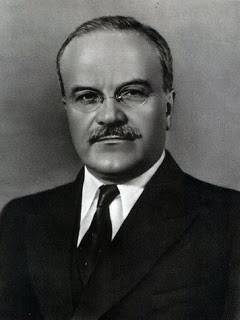
The proposal of the USSR Foreign Minister Vyacheslav Mikhailovich Molotov on the creation of a European collective security treaty by his Western counterparts was rejected. Formally, representatives of the Western powers were unhappy with the exception of the United States and China from among the parties to the treaty. In principle, this was quite logical, since one could hardly call the United States of America a European state. Moscow wanted to deal with European security countries with regard to European security. Secondly, the British side accused the Soviet leadership of political intrigues with the aim of destroying the NATO bloc.
Nevertheless, Vyacheslav Molotov did not refuse plans to conclude a collective security treaty - this testifies to the great patience of Soviet diplomats. Moscow has returned to the refinement of the principles of the conclusion of the contract. Already 10 March 1954, Andrei Gromyko, gave Vyacheslav Molotov to get acquainted with the draft new proposals for the conclusion of a collective security treaty in Europe. In this project, and talked about the possibility of entering the Soviet Union in the North Atlantic Alliance on special conditions.
Vyacheslav Molotov, the project began to recycle. In particular, he stressed that the Soviet Union does not object to the US participation in a collective security treaty in Europe, but only if the United States and NATO pursue a peace-loving and neutral policy towards the rest of European countries. 26 March 1954 Nikita Khrushchev and George Malenkov approved the final text of the draft, which spoke about the main condition for the membership of the Soviet Union in NATO - the North Atlantic Alliance’s refusal of any manifestation of aggression against any states of the world.
Thus, the Soviet Union expressed genuine readiness for honest cooperation with the West in the name of peace in post-war Europe. 31 March 1954, the Soviet Union, the Ukrainian SSR and the Byelorussian SSR applied for membership in the North Atlantic Alliance (as in the case of UN membership, the applications of Ukraine and Belarus were a tactical move aimed at securing more votes in NATO ).
Appeal of the Soviet Union with a statement about joining NATO caused a strong reaction in Western Europe. Many political and public figures, parties and movements warmly endorsed this initiative, rightly seeing in it the step of the USSR on the way to ensuring European collective security. If the USSR became a member of NATO, the threat of war in Europe would be reduced to a minimum. But the leadership of the United States, Britain and France took the Soviet idea in hostility.
First of all, this rejection was due to the fact that the United States would sooner or later have to leave the ranks of NATO and, accordingly, not to participate in the pan-European security treaty. The absence of the United States in the treaty would mean the dominance of the Soviet Union, since Great Britain and France could no longer be regarded as a serious counterbalance to the Soviet state. But here, too, Moscow expressed readiness for further concessions - the Soviet Union agreed to include the United States of America in the draft treaty on European security as a full and permanent partner.
However, the leaders of Western countries did not even want to hear that a single organization would be created in Europe as part of the Soviet Union. They saw this as a threat to their dominant positions and believed that this would lead to an increase in pro-Soviet sentiment within European states, to a gradual "Sovietization" of Europe. Therefore, 7 May 1954, the United States, the United Kingdom and France officially responded to the Soviet declaration of joining NATO with a refusal.
The official report emphasized that the proposal of the Soviet Union is unrealistic, and therefore does not even deserve discussion. Naturally, it was necessary to explain why the West refuses to the Soviet Union. Therefore, the requirements for joining NATO were obviously unacceptable for the Soviet side - to withdraw Soviet troops from Austria and Germany, to abandon military bases in the Far East, to sign an agreement on general disarmament.
But Moscow did not lose hope of reaching a consensus. Therefore, the diplomatic departments of the USSR and Western countries continued to correspond and negotiate on this issue until the next conference of foreign ministers, which took place in October-November 1955 in Geneva. In the same year, realizing that the plans to conclude a pan-European treaty remain unrealizable, the leadership of the Soviet Union went on to create its own military-political bloc.
14 May 1955, a meeting of European states on peace and security in Europe was held in Warsaw. It concluded the Treaty of Friendship, Cooperation and Mutual Assistance, signed by the Soviet Union, Poland, Czechoslovakia, Hungary, the German Democratic Republic, Bulgaria, Romania and Albania. The signing of the document marked the beginning of the history of the Warsaw Pact Organization - the military-political union of the listed states. The Political Consultative Council and the Joint Command of the Armed Forces were established to coordinate actions. Marshal of the Soviet Union Ivan Stepanovich Konev was appointed the first commander of the OKVS.
Thus, attempts to conclude a pan-European security treaty, which the Soviet Union was diligently undertaking, were in fact thwarted precisely at the initiative of the Western powers, which pursued their narrow political goals. Contrary to the stamps of Western propaganda, it is the West, not the Soviet Union, who bears full responsibility for the Cold War and all the events connected with it. Interestingly, in the 1983 year, with Yu.V. Andropov, the Soviet Union once again raised the issue of a possible entry into the North Atlantic Alliance, but it disappeared by itself after the notorious incident with the South Korean Boeing.
If in the 1950-1980-s, the West had at least formal grounds for not allowing the Soviet Union to join NATO, appealing to the enormous differences in political and economic systems of the Soviet Union and Western states, then after the collapse of the Soviet Union and the transition of post-Soviet Russia to a completely different political and economic model, borrowed in the West, this reason, it seemed, no longer. Nevertheless, nobody in Russia stubbornly wanted to see anyone. Even in the 1990s, when "democrats" were in power in the country, the West again "turned away" Boris Yeltsin and his entourage, who had plans to integrate Russia into NATO.
Currently, NATO membership for Russia no longer makes any sense. The North Atlantic Alliance itself is bursting at the seams, as evidenced, for example, by the deterioration of relations between Turkey - one of the key participants of NATO, and the United States and the European Union. In addition, dissatisfaction with adventures is also growing in Europe itself, in which, due to American political ambitions, NATO countries are participating.
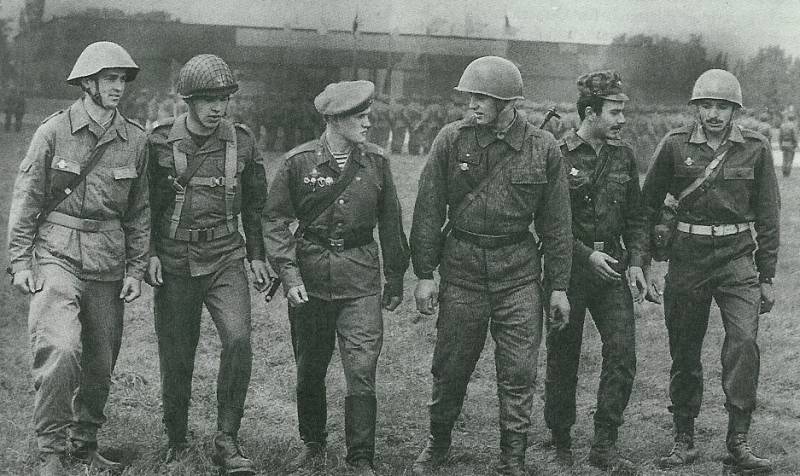
Information